STRUCTURATION IN COMMUNICATION OF VEGETABLE FARMERS WITH MIDDLEMAN IN BATURITI DISTRICT TABANAN BALI
on
E-Journal of Cultural Studies
DOAJ Indexed (Since 14 Sep 2015)
ISSN 2338-2449
February 2024 Vol. 17, Number 1, Page 19-38
https://ojs.unud.ac.id/index.php/ecs/
STRUCTURATION IN COMMUNICATION OF VEGETABLE FARMERS WITH MIDDLEMAN IN BATURITI DISTRICT TABANAN BALI
Renata Lusilaora Siringo Ringo1, I Nyoman Darma Putra2, Nanang Sutrisno3, Maria Matildis Banda4
1 National Research and Innovation Agency, 2,3,4Doctoral Program of Cultural Studies, Faculty of Humanities, Udayana University
Email: 1nata_lusilaora@yahoo.com, 2idarmaputra@yahoo.com, 3sutrisno@unud.ac.id, 4maria_matildis@unud.ac.id
Received Date : 26-01-2024
Accepted Date : 10-02-2024
Published Date : 29-02-2024
ABSTRACT
This study aimed to uncover patterns of structuration in communication between vegetable growers and intermediaries in the Baturiti District. This study employs a critical communication methodology. Data was gathered via interviews, observations, and document analysis approaches. Data analysis was conducted using descriptive qualitative interactive methods based on structuration theory. Phatic communication, patron-client relations, and divergent communication are forms of structuration in communication, as revealed by the research results. According to the empirical findings in this research, communication actions are shown to improve relationships, resulting in a tendency towards greater intimacy.
The result is that the relationship pattern of vegetable farmers has been tied to economic actors, namely middlemen, for a very long time. The theoretical finding in this research is that structuration in communication is in line with the concept of symbolic interactionism, which focuses on efforts to provide interactions using symbols and containing power to weak parties. This research contributes to policy making related to the use of agricultural products.
Keywords: communication structuration, vegetable farmers, middlemen
INTRODUCTION
Marginal groups, such as farmers, do not have the privilege to advocate for increased welfare in the public sphere. Jonathan (2012: 58) said that farmers in the informal sector, who have low incomes, have difficulty coping with the increase in living costs caused by increases in prices of necessities. In society, a common expression is ‘to be rich as a entrepreneur, respected as a public worker, and quiet as a farmer’. This statement no longer fully applies to farmers because their lifestyle has become less peaceful and prosperous. Sastraatmadja (2006:27) emphasizes that farmers live in an
E-Journal of Cultural Studies DOAJ Indexed (Since 14 Sep 2015) ISSN 2338-2449 https://ojs.unud.ac.id/index.php/ecs/
environment characterized by backwardness and poor living standards. Various farmers and agricultural workers in rural areas also face similar difficulties. According to Warto (2015:20), village communities should be able to live in prosperity, but the actual situation does not reflect this.
National farmer poverty is an accumulation of farmer poverty in the regions. One of them is shown by the poverty experienced by vegetable farmers in the Baturiti District, Tabanan, Bali. They work hard, but their income continues to decline. The difference or gap between income and expenditure makes it difficult for vegetable farmers in Baturiti District to escape poverty. Monographic data for the Baturiti District in 2021 shows that 21,034 residents earn their living as farmers. Meanwhile, 2,536 families or the equivalent of 17.23% of the population of Baturiti District are categorized as poor (2021 Baturiti District SDGs Data).
Temporary data: In three villages in the Baturiti District, there are 3,958 farmers and around 616 intermediaries. This quantity is constant and is related to agricultural commodity trade. Middlemen buy vegetable crops from farmers and then sell them to wholesalers in various regions. Usually, middlemen come to farmers’ residences to sell the vegetables they produce. This condition is made worse by the soaring prices of basic commodities and other necessities of life so that field products are forced to be sold at inexpensive prices to middlemen because vegetable farmers do not have access towards the market, on the other hand, middlemen benefit from this practice so that their lives are better and more prosperous than vegetable farmers.
This condition is exploited by capital owners to perform various practices of hegemony and monopoly on poor groups, thus creating a circle or trap of poverty as a chain that is difficult to break. This study investigates the way vegetable intermediaries and producers communicate to influence their decision-making processes (communication structure). Communication structure is useful for understanding the communication process because it emphasizes interaction as the arena where structure occurs.
METHODS
The research and writing process was structured according to the hallmark of cultural studies—qualitative critical analysis. This research uses a qualitative methodology, which seeks to understand a phenomenon in its authentic social environment through facilitating extensive communication and interaction between the
https://ojs.unud.ac.id/index.php/ecs/
researcher and the phenomenon under investigation. Based on the understanding of qualitative research, cultural studies research embodies the characteristics of qualitative research. This approach is characterized by an ethical and empathetic nature, as it requires data collection through in-depth interviews and attempts to describe the perspectives, language, thought processes and expressions related to the research subject.
This research offers two novelties. First, examine a new topic regarding the central influence of communication as a cause of difficulties for Baturiti vegetable farmers in raising their standard of living to a more prosperous level. Second, examine the phenomenon of the lives of vegetable farmers in Baturiti in terms of their unequal relations with middlemen using eclectic approaches such as communication theory and critical theories of structuration and power relations, which are widely used in cultural studies.
RESULTS AND DISCUSSION
Forms of Communication Structuration Between Vegetable Farmers and Middlemen
-
1 Fatic Communication between Vegetable Farmers and Middlemen
The relationship between farmers and middlemen occurs because there is a similarity in the meaning of each role. Necessary in defining the meaning of a situation because meaning is not intrinsic. This relationship is symbolic because it is built on a foundation of understanding, or mutual understanding, of each role in social interaction. An important aspect of a partnership is the response that occurs within it. These responses tend to be in sync with other people’s behaviour. Humans essentially want to maintain balance in their relationships with other people (Sunarti, 1990: 88). The presence of local economic actor such as skippers, baskets, and vegetable middlemen in the vegetable trade among agricultural communities plays an important role in meeting the economic needs of vegetable farmers. However, this also creates patron-client relationships that can lead to economic dependency among vegetable farmers.
Vegetable marketing is any form of economic activity that is still dominated by local economic actors. Especially marketing carried out in traditional markets. Economic activities in vegetable marketing are a form of people's economy that is owned by many people so that many people are absorbed in the economic activities of vegetable marketing. People's economy refers to economic activities carried out by several people on a simple scale (Krisnamurti, 2002). The interaction between intermediaries and
https://ojs.unud.ac.id/index.php/ecs/
vegetable producers in Candikuning Village, Batunya Village, and Angseri Village is characterized by phatic communication, so that a deep relationship is established based on field observations.
As stated by the Tengkulak informant in Candikuning Village, I Made Budiana, who stated that:
"Usually, if I want to know a vegetable farmer who needs capital or my help, I always chat with him by showing my voice, for example the sound of being happy to meet the farmer and of course using polite words accompanied by body language too" (Interview, 8 May 2023).
The informant's answers show that individuals with a higher social position tend to have more freedom in using various types of greetings in real contacts.
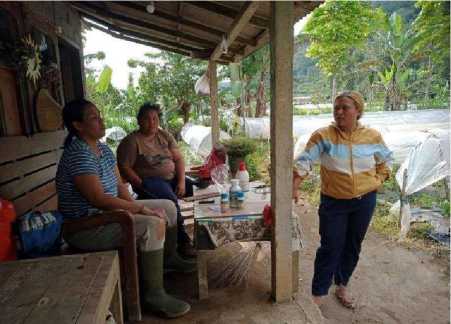
Figure 1 Middlemen and vegetable farmers in Candikuning chatting. Source: Renata Documentation, 2023
Communication in this research must show fundamental adaptation to the environment as a deliberate transition stage of development, fostering the willingness of vegetable farmers to overcome income uncertainty due to environmental factors.
In the opinion of the Head of Batunya Village, I Made Riasa, said that:
“The bonds that occur between communities in an agricultural-based village environment are built through interaction. The actualization of the fulfillment of individual needs is based on the economic activities carried out by each party, so that the elements of cooperation and establishing kinship are used as the basis for establishing relationships" (Interview, 18 July 2023).
Interviews with informants show that the shared interest in meeting social demands stems
https://ojs.unud.ac.id/index.php/ecs/
from a similar cultural heritage. These activities are evident in vegetable farmer relationships, including obtaining and providing information, persuading, or influencing, exploring alternative problem-solving approaches, making choices, and achieving social goals through interactive communication.
Communication in contact is always connected to rules, instincts, and values. Habermas' opinion (2006:56), rules, instincts and values are not formed by individual perceptions but by communication between individuals. In addition, unity in a particular social environment is not private property and is formed through social communication. Habermas's perspective is that the actions of intermediaries and vegetable farmers constitute the internalization of socially formed norms.
Symbolic interactions seen in the field include interpersonal relationships in rural communities, where vertical relationships with external factors and horizontal relationships between local actors play an important role. Hermawanti (2003: 4) explains that social bridges are formed by actors in response to their individual vulnerabilities, thereby enabling them to create social relationships to strengthen themselves through the exchange of knowledge and resources, both economically and socially.
This is also reinforced by the opinion of the Head of Angseri Village, I Nyoman Warnata that:
"Weaknesses and strengths of vegetable farmers and middlemen who are based on the values of trust and understanding are caused by frequent interactions. Then uncertainty (such as in terms of marketing and revenue) is an external factor that underlies the relationship” (Interview, 19 July 2023).
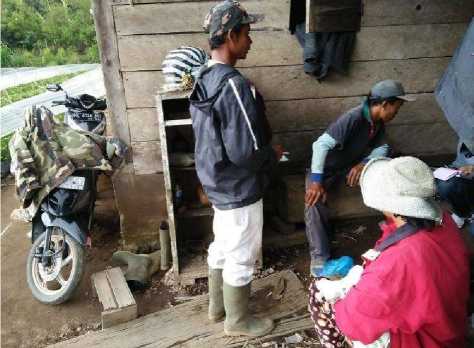
Figure 2 Interaction between vegetable farmers and middlemen Source: Renata Documentation, 2023
https://ojs.unud.ac.id/index.php/ecs/
Based on Figure 2, the informant's position in the interview is in line with Peter Blau's view (in Scott 1981: 249) that the basis for assessing the suitability of transaction value is influenced by circumstances, namely:
“…however, if the power to demand services and obedience originates from the provision of necessary benefits, then its use is not considered detrimental. If these benefits are greater than social norms regarding appropriateness, expected by subordinates as a reward for their services and obedience, then subordinates will perceive the superior's position as profitable and strengthen the superior's power. If subordinates' expectations are met adequately, they will not feel exploited. "It's different if those who monopolize vital sources of wealth go beyond norms that are considered appropriate and fair, then subordinates will feel exploited and will take advantage of every opportunity to escape the power of the ruling group."
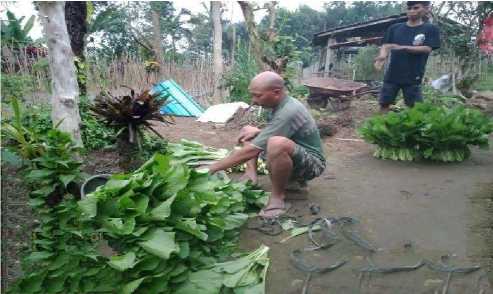
Figure 3 Interaction between vegetable farmers and middlemen in Angseri Village Source: Renata Documentation, 2023
Figure 3 illustrates that social exchange contacts provide a foundation that links behavior and the environment, creating reciprocal relationships that impact each other. Social networks provide access to resources through reciprocal relationships based on family, neighborhood, and friendship. Through field observations, those who are classified as rich (wong sugih) have an important role and influence on the livelihoods of vegetable producers, occupying high social positions and status. They are considered to have large resources, so they are considered capable of overcoming the challenges faced by vegetable producers. Parson (2004: 171) suggests that a social system is a method of organizing social activity, equipped with a cultural system that stores values and symbols, as well as a personality system of individual actors.
When someone fulfills their duties and responsibilities based on their position, then
https://ojs.unud.ac.id/index.php/ecs/
they are carrying out a role effectively. These two aspects are interdependent, as one cannot exist without the other. Social position is a permanent aspect that shows a person's position in the structure of society. Social stratification plays an important role in shaping social systems by determining the patterns that govern the interactions and behavior of individuals based on their social roles and capacities.
Narwoko (2004: 242) emphasizes that belief systems, symbolic systems, and value orientation standards facilitate smooth relationships, interactions, and social processes in society. This is in accordance with the opinion of Candikuning Village Head Made Mudita who stated that:
"Through a very long communication process, values and rules are part of the culture that exists in the context of the relationship between vegetable farmers and middlemen. These values and rules are the fundamental basis for a person to determine his attitude towards the surrounding environment which becomes the standard of interaction established by individuals from generation to generation" (Interview, 18 July 2023).
This informant's view is in line with Mulyana's (2004: 4) view of language as a communication tool, which emphasizes that communication allows people to build a frame of reference for understanding social situations.
-
2. Patron – Client Relationship between Vegetable Farmers and Middlemen
Patron-client relationships are common in societies facing complex social problems and limited economic means. Scott (1993: 7) defines patron-client relationships as exchange dynamics between two individuals. It is a form of two-person bonding characterized by instrumental friendship, in which a person of higher socioeconomic status (the patron) leverages his or her influence and resources to offer protection and benefits to a person of lower status (the client).
These relationships and exchanges are complex and continuous, often only ending in the long term (Imaniar and Trisnu, 2020). The patron-client relationship centers on unequal trade between the two parties and is not based on presumptive criteria. The characteristics of patron-client relationships are as follows: 1. Economic resources are owned unequally. 2. Reciprocity is a reciprocal relationship between giving and receiving benefits, even though they are unequal. 3. Loyalty relationships include loyalty and obedience. Personal relationships provide a close and intense relationship between customer and customer, leading to interactions that are not primarily driven by profit but
https://ojs.unud.ac.id/index.php/ecs/
also include the emotional characteristics typical of personal relationships.
Observations in the field show that there is no formal cooperative relationship between patrons and customers, even though they have the same interests. Patrons are usually wealthy individuals known as nakhoda, bos, or tauke who support vegetable farmers and their families without any conditions or guarantees, thereby fostering lasting collaborations. Vegetable farmers who work without money or access to finance fulfill the role of customers. According to Usman (2016: 87), a patron is defined as someone who has power, prestige, authority and influence, while a client is a person or subordinate of the patron.
As stated by an informant from Angseri Village, I Gusti Ngr Nyoman Kartika, that: "I am if you sell these vegetables, go to the middleman you subscribe to, because he is the one you know who has the best prices. But if you deliver it to him continuously, you can't be sure, because the price of these vegetables is different, the middlemen also have different prices for the vegetables they provide. Yes, if we feel that the price they give is not suitable, or know from other friends that there is a middleman who gives a better price, we will take it to him. "Most of all, you are secretive so you don't see your subscriptions (Interview, 19 July 2023)."
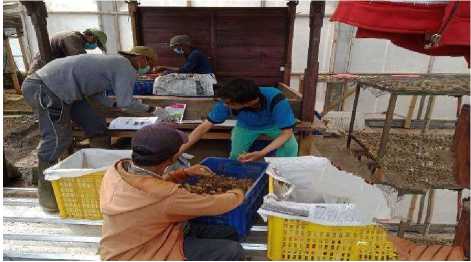
Figure 4 Vegetable Farmers Sell Potatoes to Middlemen Source: Renata Documentation, 2023
Vegetable producers rely heavily on intermediaries who are capital owners due to the resources they have, as shown by the interview findings and Figure 4. Patron-client relationships are characterized by personal familiarity and trust built through face-to-face interactions. Patron-client interactions, as explained by Scott, include unequal trade, occur face to face, and are characterized by broad flexibility and prevalence (Rustinsyah, 2011: 176). This happens among vegetable producers and their intermediaries who know each other because they often meet and interact. To build mutual trust between them.
https://ojs.unud.ac.id/index.php/ecs/
This statement was conveyed by I Nyoman Artawan who acted as an intermediary in Candikuning Village during the interview.
"I'm a vegetable farmer who has worked with me for a long time and does a good job and diligently sells the produce in the form of vegetables, I don't hesitate to borrow money if he needs money, but if I'm a new farmer, I'm a bit wary of borrowing a lot of money because I often there are those who leave secretly without paying off their debts.” (Interview, May 15, 2023).
Based on the interview, it appears that a patron-client relationship is formed when the patron and client have had a very long and close relationship. Connection Patron-client is not just a business relationship, but the relationship extends to the personal problems of vegetable farmers' households. This is what an informant from Batunya Village, Ni Ketut Mesir, said:
"I was once given a loan for a child's wedding, once to help pay off old debts, and several times borrowed to pay for school needs" (Interview, 29 May 2023).
The source believes that poor economic conditions make vegetable farmers dependent on loans for money and daily needs from superiors or intermediaries, so that farmers become dependent on them. This is in line with James Scott's observations regarding the transition from patron to customer in the context of farmer livelihoods. The fundamental of living sustenance, namely the provision of employment opportunities or stable agricultural land.
Based on interviews with informant I Wayan Suparka, before the power dynamics between capital owners and vegetable farmers occurred, the conditions were already familiar. In addition, many middlemen and vegetable farmers live in the same village, so there is often interaction and good relations between them, without any misunderstandings. The middleman as the financier said that the arrangements for borrowing funds were carried out based on an agreement between the middleman and the vegetable farmers, with the priority being the middleman's profits (Interview, 29 May 2023).
According to insiders, middlemen have more power in their relations with vegetable producers, who bear the losses. This scenario is very difficult for vegetable producers because the results they get do not match their efforts. Figure 5 illustrates the relationship between vegetable farmers and intermediaries. This linkage creates a sense
https://ojs.unud.ac.id/index.php/ecs/
of obligation towards vegetable farmers on the part of customers, giving rise to ties that require the sale of the resulting vegetable goods to intermediaries.
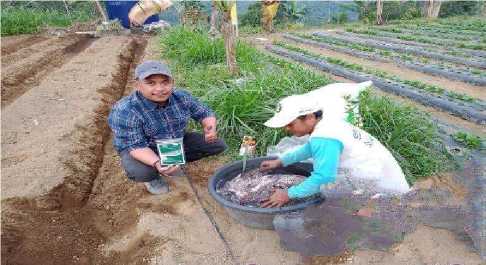
Figure 5 Middlemen Giving Fertilizer to Vegetable Farmers in Batunya Village
Source: Renata Documentation, 2023
Collaborating with an intermediary is a great option to get a loan to start a farming operation. Farmers often rely on intermediaries to provide financing for their agricultural needs. Intermediaries are one of the fastest and most accessible agents for obtaining loans. Intermediaries help farmers by providing financial support and essential resources throughout the farming process, from planting to harvest. Farming communities often depend on intermediaries for personal, household, and agricultural needs.
In line with the conditions in the field conveyed by the informant from Candikuning Village, namely Ni Wayan Keni, who said that:
"I am usually sells her vegetable crops to middlemen (customers), it is impossible for us to sell to other middlemen. There is no etiquette if it's like that (selling to other middlemen), especially since the fertilizer belongs to the middleman, sometimes we use seeds from the middleman first, we also never buy fertilizer, it's like that, do we want to sell to someone else? Yes, it means there is no ethics if we are like that" (Interview, 2 March 2023).
The informant's perspective is in line with Andre Gunder Frank's dependency criteria outlined in Saebeni's work (2019: 78) which includes dependent economic livelihoods and the presence of the local bourgeoisie. According to the source, vegetable farmers in Baturitti Regency depend on the local bourgeoisie, especially middlemen, for their economic survival.
https://ojs.unud.ac.id/index.php/ecs/
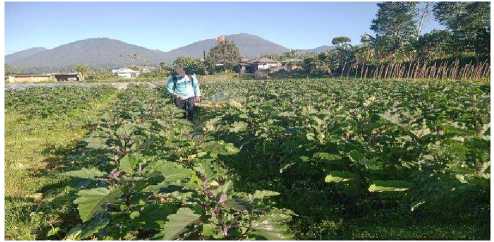
Figure 6 Vegetable Farmers in Candikuning Village Source: Renata Documentation, 2023.
Figure 6 shows a vegetable farmer watering his plants with fertilizer. The fertilizer used by vegetable farmers is usually borrowed from middlemen. This is in line with the opinion of I Wayan Sutarga as a vegetable farmer in Angseri Village who said:
"Yes, I went to middlemen because I needed it, borrowed fertilizer when I had to pay and ended up selling it cheaply" (Interview, 19 July 2023).
The exposure of several vegetable farmers who farm using fertilizer or seeds owned by middlemen is very dependent on the landlady or vegetable middlemen that vegetable farmers subscribe to. This can be seen from the dependence of vegetable farmers on loans or material guarantees provided to vegetable farmers.
To cultivate horticultural crops, farmers need funds to buy organic fertilizer, chemical fertilizer, fungicides, insecticides, mulch, vegetable seeds, and to cover labor costs. Overall expenses for farmers vary based on the type of vegetables they grow, but often require large amounts of company capital. Ashari (1995) said that vegetable production requires higher expenditure, trained personnel, and more expensive infrastructure than food crop farming.

Figure 7 Vegetable Farmers Preparing Fertilizer Source: Renata Documentation, 2023
https://ojs.unud.ac.id/index.php/ecs/
Figure 7 shows vegetable farmers preparing fertilizer for the vegetable seeds they plant. The fertilizer is obtained from middlemen. This is reinforced by a statement by a middleman from Candikuning Village, namely I Made Budiana, who said that:
“We do have some fertilizer and seeds, but not much. Usually vegetable farmers use fertilizer and seeds. Yes, we don't lend fertilizer or plant seeds to just any vegetable farmer. We know the vegetable farmers we give fertilizer or plant seeds to very well. He also sells his vegetable crops to us. "As for assistance, usually if they don't have money to buy planting material, we give it too, but later when we sell the vegetable harvest, we cut it."
The middleman informant from Batunya Village, Mr. I Wayan Wiaranata, also said something similar, namely:
“It is true that there are several vegetable farmers who sell their crops to us using our seeds for farming. Vegetable farmers who use our seeds for farming activities are vegetable farmers we have known for a long time. Yes, we help as much as we can, for example if they don't have money to buy fertilizer, we give them a loan. "Later, when selling the harvest, it will be counted or cut."
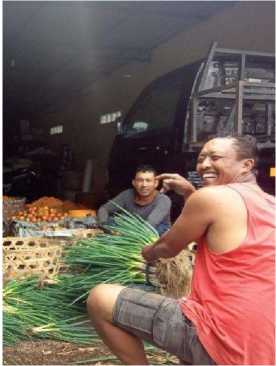
Figure 8 Middlemen in Batu village Source: Renata Documentation, 2023.
Partnerships like these can easily lead to vegetable producers being oppressed and exploited by their clients. According to Giddens' structuration theory, a situation like this is called a domination structure, which includes a system of control over people and resources. The act of providing seeds and fertilizer becomes a channel for this social
E-Journal of Cultural Studies
DOAJ Indexed (Since 14 Sep 2015)
ISSN 2338-2449 https://ojs.unud.ac.id/index.php/ecs/
activity.
This was also conveyed by one of the vegetable farmers, I Made Suarta in Candikuning Village, in his opinion stating that: "we are farmers, we are not allowed to sell vegetables to people other than the middlemen we subscribe to, if we violate, we can be given sanctions such as not being given fertilizer or seeds.” (Interview, July 20, 2023).
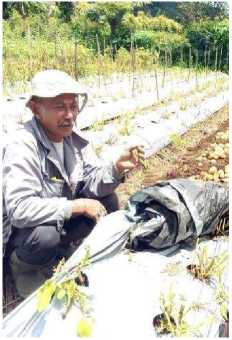
Figure 9 Exciting farmers in Candikuning village Source: Renata Documentation, 2023
Through field observations, the activities carried out by intermediaries as economic agents constitute a kind of trading framework. If the vegetable farmer refuses to sell to him, the structure no longer applies to him, resulting in consequences. Without seeds and fertilizer, vegetable producers will experience losses due to the buildings they build.
James Scott (1972: 215) defines patron-client as a reciprocal relationship between two individuals of different economic or social status, who are established for mutual benefit through the exchange of goods or services. Customers have a higher social position than customers. Patron-client relationships influence survival and can also lead to societal transformation. This relationship will last as long as both patron and client have something of value to give, thus ensuring its continuation.
This is in line with the opinion of the Head of Candikuning Village, I Made Mudita, who said that:
“The government is still struggling in the process of increasing production. This inconsistency in routine purchases of vegetables directly from vegetable farmers will not immediately build farmer awareness. Selling it to middlemen without realizing that these farmers are also undermining the system” (Interview, 20 July
https://ojs.unud.ac.id/index.php/ecs/
2023).
Interviews with informants revealed that vegetable farmers in Candikuning Village, Batunya Village and Angseri Village had good relations with each other. The patron-client relationship is characterized by unequal transactions, where the client offers services in the form of labor and agricultural products only to his patron. Pembina will reciprocate by offering cash loans, providing support, and providing guarantees or protection to its customers. In addition, farmers work with intermediaries get support in preparation, sorting, and shipping procedures. When farmers have a large harvest, they need more labor because the workload increases. To ensure efficiency in the harvesting, sorting, structuring, and transporting processes, the intermediary instructs his subordinates to assist customer farmers in carrying out these tasks. This helps simplify the process and reduce the workload on farmers, ensuring that harvested vegetables quickly reach primary markets for resale.
Field observations show that when the government attempts to change a structure, this triggers a response from intermediary parties called intermediaries. These intermediaries use various tactics to prevent structural disruption, such as influencing farmers by controlling capital as an economic asset.
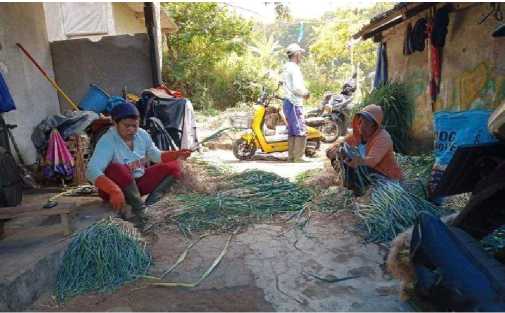
Figure 10 Pere farmers prepare their harvest to be handed over to middlemen. Source: Renata Documentation, 2023
The framework that is built has been established over a long period of time and is carried out consistently or regularly. Vegetable farmers traditionally depend on economic actors/intermediaries in their relationship patterns. When the harvest is abundant, middlemen often approach farmers to buy the crops directly. Likewise, farmers consider profits and losses, as well as urgency, when deciding where to sell their produce.
https://ojs.unud.ac.id/index.php/ecs/
-
3. Divergent Communication between Vegetable Farmers and Middlemen
The culture of Baturiti District is very diverse, resulting in cultural systems and values that reflect the acculturation of each component within the framework of society. Group living is a cultural tradition passed down by intermediaries from generation to generation, with the primary goal of providing mutual aid and support during difficult circumstances.
This is in line with the opinion of the informant as a middleman from Candikuning Village, I Made Budiana, who said that:
"In the middleman group there are non-formal leaders who are trusted by group members, for example, to make decisions to maintain a harmonious life or togetherness" (Interview, 17 July 2023).
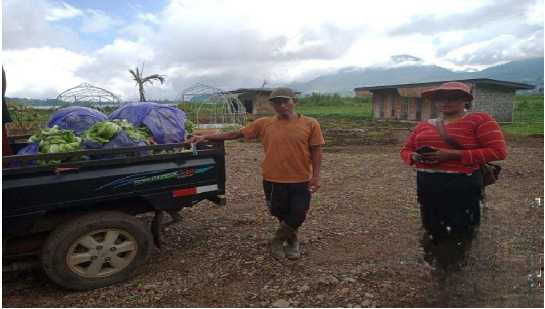
Figure 11 Middlemen in Candikuning Village Source: Renata Documentation, 2023
According to intermediary informants from Candikuning Village, there has been a real change in the presence of informal leadership which seeks to maintain peaceful life in the current era of information transparency. This can be seen as rooted in community interests which aim to improve community welfare, including the convergence paradigm or participatory paradigm in communication.
Convergent communication according to Roger & Kincaid (1981: 79) is a form of dialogical communication where individuals in similar circumstances share information to achieve mutual understanding and agreement in order to achieve communication goals that involve society directly. Sociologist J.D. Halloran explains that communication occurs in a social context that influences how communication begins, develops, and unfolds.
Observations in the field show that intermediary group leaders or opinion leaders
E-Journal of Cultural Studies DOAJ Indexed (Since 14 Sep 2015) ISSN 2338-2449 https://ojs.unud.ac.id/index.php/ecs/
influence public opinion by introducing and ultimately gaining acceptance of previously rejected ideas. Opinion leaders in intermediary groups also serve as political leaders.
Group leadership, as defined by Nimmo (2001: 211), refers to a collection of group functions that are important so that a group can operate successfully to meet the needs of its members. 2) Group leadership is the consistent use of influence by an individual in carrying out group functions. 3) Group leaders are members of society who have a position that allows them to convey opinions about a problem to other people. 4) The leader in the group is a certain individual who is responsible for guiding and coordinating group activities related to the task. 5) Leadership is a process in a group. According to experts, communication carried out by intermediary leaders involves influencing personality, seeking approval, using influence and persuasion, achieving goals, interacting, and forming structure in the group.
The Head of Batunya Village, I Made Riasa, stated that communication patterns controlled by middlemen hamper the ability of vegetable farming communities in rural areas to overcome poverty. The informant's views, as well as Razali's statement (2004: 25), show that poverty seems to be a characteristic of vegetable farmers.
The poverty of vegetable farmers is closely related to the interaction and communication methods between intermediaries and farmers in transactions which are not always efficient. This is influenced by the situation of intermediaries who buy goods at prices far below market prices.
Rahmawati and Fariyanti (2018) said that vegetable crops often experience an increase in supply, causing price declines or price instability, which may result in vegetable farmers not having a guaranteed income. Observations at the research site show that these challenges do not prevent farmers from continuing to grow vegetables. The communication structure between intermediaries and vegetable producers which is dominated by intermediaries causes excessive production of vegetables, resulting in a reduction in the economic value of vegetables. This can be seen from the testimony of informant I Gusti Nyoman Korma who said that during the dry season most vegetables are not sold on the market because they are of good quality and do not need to be sold. As a result, many of these vegetables are thrown away (Interview, 22 August 2023).
Middlemen will seek revenue that may have a negative impact on vegetable producers. This social interaction relationship is referred to as a social process, which involves the way individuals and social groups interact when they meet and form the structure and dynamics of their relationships. Changes in existing lifestyle patterns can
https://ojs.unud.ac.id/index.php/ecs/
disrupt existing interactions, as stated by Soekanto (1997: 66). The social relationship
studied is the interaction between vegetable producers and intermediaries in the process of buying and selling crops. Middlemen and farmers can influence each other when involved in social relations related to buying and selling.
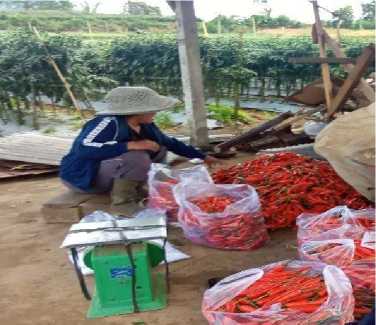
Figure 12 Middlemen Weighing Farmers' Harvest Results Source: Renata Documentation, 2023
Farmers, especially vegetable farmers, have an important role in land development and their input is very important. Utilizing participatory communication methods is the most effective approach for governments and social institutions who want to support the economic growth of farming communities in rural areas. Participatory communication involves horizontal exchange of information between the community and top-down bottom-up, dialogical communication between stakeholders to overcome societal problems, equal roles for communicators and recipients, and equal power for stakeholders in decision making.
According to Giddens' (2004: 67) structuration theory, practice occurs within a framework consisting of resource components and rule elements that guide agent activities in achieving goals according to plan. Through field investigations, vegetable farmers and intermediaries have strong social interactions and are characterized by interdependence. Vegetable producers and middlemen have different mindsets to ensure smooth social interaction between them. The aim of improving these relationships is only to generate income for farmers and growers. As time goes by, the relationship between farmers and intermediaries will become increasingly interconnected.
E-Journal of Cultural Studies DOAJ Indexed (Since 14 Sep 2015) ISSN 2338-2449 https://ojs.unud.ac.id/index.php/ecs/
CONCLUSION
Research conducted on vegetable intermediaries and producers in Baturiti Regency produced three empirical results. Intermediary traders and vegetable farmers use phatic communication in their communication methods. Phatic communication aims to improve relationships, often leading to increased intimacy.
The government is targeting agricultural rejuvenation through Governor Regulation Number 99 of 2018 which focuses on marketing and utilization of agricultural products, fisheries and local Balinese industry. This governor's order shows the government's use of a structuralist perspective to address market failures by identifying missing codes to provide price guarantees for farmers' goods and reduce the influence of intermediaries in the trading system. Increasing the negotiating power of vegetable farmers requires continued efforts to build a framework and maintain consistency to foster self-awareness among farmers. Vegetable producers can strategically choose where to sell their products and choose the intermediaries through whom they purchase commodities, as a structural response to their rational decision making. When the structure is such, attempts are made to align it with other structures, depending on the context of relativism. Actors and structures will interact based on the sustainability of their socio-economic activities.
Apart from empirical evidence, this research also presents theoretical conclusions regarding communication structuration. This is in line with the understanding of symbolic interactionism which emphasizes the use of symbols in interactions and the distribution of power between different parties. Symbolic violence is a form of subtle violence used against individuals in society that does not cause resistance but rather acceptance because it is considered legitimate in that society. Symbolic violence is often experienced without individuals realizing it.
REFERENCES
Blumer, Herbert. (1969). Symbolic Interactionsm: Perspective and Method. Inggris: Prentice Hall.
Giddens, Anthony. (1976). The New Rules of Sociological Method: A Positive Critique of Interpretative Sociologies. London: Hutchinson of London.
Giddens, Anthony. (1981). A Contemporary Critique of Historical Materialism. Vol. 1. Power, Property, and the State. London: Macmillan.
Giddens, Anthony. (1984). The Constitution of Society. Cambridge: Polity Press.
E-Journal of Cultural Studies
DOAJ Indexed (Since 14 Sep 2015)
ISSN 2338-2449 https://ojs.unud.ac.id/index.php/ecs/
Giddens, Anthony. (1995). Politics, Sociology and Social Theory. California: Stanford University Press.
Habermas, Jurgen. (2006). Teori Tindakan Komunikatif I, Rasio dan Rasionalitas Masyarakat. Yogyakarta: Kreasi Wacana.
Hermawanti, Mefi dan Hesti Rinandari. (2003). Local Empowerment Module in Indonesia.Yogyakarta: IRE dan European Initiative for Democracy and Human Right
Koentjaraningrat. (1990). Kebudayaan Mentalitas dan Pembangunan. Jakarta: Gramedia Pustaka Utama.
Krisnamurti Bayu. (2002). Strategi Pembangunan Ekonomi Rakyat, dalam Kerangka Pembangunan Ekonomi Daerah. Diterbitkan oleh: Pusat Studi Pembangunan, Institut Pertanian Bogor: Bogor.
Mahmudah, Erni dan Sugeng Harianto. (2014). Bargaining Position Petani dalam Menghadapi Tengkulak. Surabaya. Jurnal Paradigma.Vol 2, No.1.
McPhee, Robert D. dan Poole, Marshall Scott. (2005). “Structuration Theory”. Dalam Steve May dan Dennis K. Mumby. Engaging Organizational Communication Theory & Research: Multiple Prespectives. Thousand Oaks, California: Sage Publications, Inc.
Mulyana, Deddy. (2004). Ilmu Komunikasi: Suatu Pengantar. Cetakan keempat. Bandung: Remaja Rosdakarya.
Narwoko, Dwi dan Bagong Suyanto. (2004). Sosiologi, Teks Pengantar dan Terapan. Jakarta: Prenada Media.
Rahmawati. A., dan A. Fariyanti. (2018). Analisis Risiko Harga Komoditas Sayuran Unggulan di Indonesia. Agribisnis Forum. 8 (1): 35 – 60. Ritzer, G. 2002. Sosiologi Ilmu Pengetahuan Berparadigma Ganda. Jakarta. PT Raja Grafindo
Persada.
Razali, Ivan. (2004). Strategi Pemberdayaan Masyarakat Pesisir Dan Laut. Jurnal Pemberdayaan Komunitas, 3(2):62.
Rogers, Everett dan D. Lawrence Kincaid. (1981). Communication Network: Towards a New Paradigm for Research. New York: Free Press.
Rustinsyah. (2011). Hubungan Patron Klien di Kalangan Petani Desa Kebonrejo. Journal. unair.ac.ic. volume 24, Nomor 2, hal 176-182.
Saebeni, B.A. (2019). Sosiologi Pembangunan. Bandung: CV Pustaka Setia
Sastraatmadja, Endang. (2006). Petani di Tanah Merdeka. Bogor: Petani Center
Scott, James. (1994). Moral Ekonomi Petani. Jakarta. LP3S.
Soekanto, Soerjono. (1997). Sosiologi Suatu Pengantar. Jakarta: PT Raja Grafindo
https://ojs.unud.ac.id/index.php/ecs/
Persada.
Sunarti dkk. (1990). Masyarakat Petani, Mata Pencaharian Sambilan dan Kesempatan Kerja. Jakarta: Depertemen Pendidikan dan Kebudayaan:
Sutisna. (2015). Tengkulak dan Petani: Kajian Historis terhadap Perkembangan Tengkulak Sayur di Desa Nanggerang Kecamatan Cililin Kabupaten Bandung Barat Tahun 1990-2013. Bandung: Universitas Pendidikan Indonesia
Suyanto B. (2016). Kenapa generasi muda enggan bertani? Memahami subkultur dan gaya hidup anak muda dari perspektif cultural studies. Bahan Pertemuan Upaya Meningkatkan Minat Generasi Muda terhadap Pertanian; 2016 Feb 23; Bogor, Indonesia. Bogor (ID): Pusat Perpustakaan dan Penyebaran Informasi.Syaifullah. 2016. “Prespektif Giddens dalam Pola Relasi Petani Di Kecamatan Rejoso, Kabupaten Nganjuk”. Jurnal Politik Muda, Vol. 5, No. 2, April - Juli 2016, 147 – 170
Usman, R. (2016). Pola Hubungan Sosial Masyarakat Petani dengan Tengkulak. Universitas Negeri Gorontalo. Gorontalo.
Warto. (2015). “Kondisi Kemiskinan Petani dan Upaya Penanggulangannya”. Jurnal PKS, 14 (1), Hal. 20 – 29.
38
Discussion and feedback